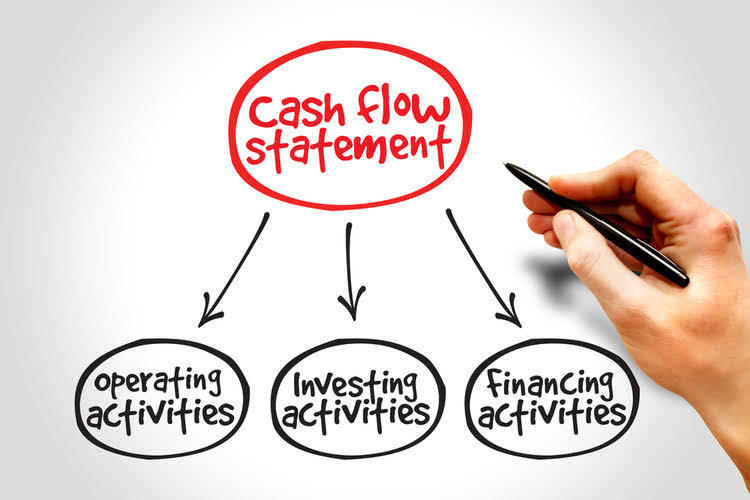
By using the right payment processing services, you’ll automatically create records and business data that can be used for long-range planning. Accepting recurring payments brings many benefits to your business — for you and your customers. Here are just some of the reasons why business leaders love to use recurring payments as part of their billing processes. Customers can use recurring payments to manage subscriptions or make consistent payments according to a payment plan.
- PCI compliance is mandatory for businesses that accept credit or debit card payments.
- With variable (or irregular) recurring billing, the amount you collect might change with each payment cycle.
- If you’re not careful, though, the elevated risk posed by chargebacks and fraud could negate all the benefits.
- Customers can set their preferences and enjoy uninterrupted service while remaining in control of their subscriptions, adding to their overall satisfaction.
- All these models come with their unique advantages, especially in terms of revenue expansion opportunities through cross-selling and upselling strategies inherent in tiered plans.
How Do You Cancel a Recurring Payment on a Debit Card?

Grasping which enterprises gain most from Recurring Billing prepares us to examine the various available models. Above, we mentioned that recurring billing is characteristic of the subscription business model, which is gaining momentum today. From streaming services like Netflix to SaaS platforms like Adobe Creative Cloud (and more), recurring subscription models have become the gold standard for pricing strategies across various industries.

Benefits & challenges of recurring payments
When a payment error occurs, the process of notifying customers can become cumbersome, especially when your customer base is growing. For example, the system can allow authorized customers to make changes to their payment information in the self-service portal before their next payment is processed. Despite its many advantages, https://www.bookstime.com/ businesses using a recurring billing model may also face some challenges. For instance, monthly subscriptions offer flexibility and are relatively risk-free, giving customers a low barrier to entry. This form of value provision is a solid strategy for customer base growth in any SaaS or subscription business.
- You should also receive a copy of the agreement along with instructions for cancelling the agreement.
- It seamlessly manages revenue recognition for Stripe subscriptions in QuickBooks, using a Deferred Revenue account to allocate funds and gradually transferring them to the appropriate income accounts on a set schedule.
- When you’re looking for a billing services provider, though, you’ll want to do some careful research.
- In variable (or irregular) recurring billing, the amount collected from the customer might change in every payment cycle.
- Asaf has built 3 successful companies to date, all with an exit plan or that have stayed in profitability and are still functional.
- From the initial setup where customers authorize the recurring deduction to managing payment failures and renewals, Stripe has mechanisms in place for all.
Payment management hassles
- You’ll be looking at options like cloud-based services, on-premise software, and open-source solutions.
- For businesses, the same convenience lowers the risk of delayed or denied payments, negating the need to follow up with customers.
- Most SaaS companies combat this complexity by using an integrated subscription management tool that helps ensure customers are always charged the right amount at the right time.
- In the fixed recurring billing model, customers are consistently charged the same amount every billing cycle.
- There is one major factor, though, that can help reduce churn in nearly every subscription-based business, and that’s lengthening your subscription cycles.
- This could be an innocent mistake on the customer’s part, or occur when dishonest players attempt to “cyber shoplift.” In any case, it’s your responsibility to spot and resolve issues with your recurring billing model.
Recurring payments, also sometimes called recurring billing or subscription payments, are automatically charged or deducted at regular, predetermined intervals, such as weekly, monthly, quarterly, or annually. A recurring payment system works by letting customers authorize a service provider to charge their accounts at regular intervals. Customers typically provide their payment details (i.e. credit card details) at the time of initial purchase or registration, and merchants store that information in the customer’s account securely for future charges.

Metered billing is a system of charging customers recurrently based on their usage of the service. The terms recurring payments and subscription billing are often used interchangeably. That’s because they’re closely related and go hand-in-hand with each other. Basically, it is the process of ensuring subscriptions to your product or service are billed accurately and on time for each customer, accounting for global taxes, proration, payment failures, etc. Sometimes you’ll pay an additional fee, and sometimes it is included for no monthly fee. Unfortunately, there is quite a lot of variability here among the best payment gateway providers for online businesses.
It is typically up to the business provider to decide on the options for payment. Some providers require that checking or saving accounts be used while others allow for checking, savings, and credit card accounts. You will discover that integrating Recurring Billing systems could greatly streamline your operations. This approach especially benefits enterprises like gyms, media streaming services, and those offering software licenses. This regularity is vital for sustaining cash flow and projecting future revenues more precisely.

What is Recurring Subscription Billing? Definition and Examples
The simplification of the payment process takes various forms, making recurring billing a top choice for businesses around the globe. They minimize administrative tasks, eliminating the need to manually process payments or send invoices, recurring billing which saves time and resources. This system also reduces missed payments and late fees, improving financial efficiency. Variable recurring billing, on the other hand, depends on how many services or products the customer has used.
Analyzing recurring payment data can also help businesses identify growth opportunities. Once you have your details set up, select «save.» You’re now set up to complete payments on a recurring basis, though you can also come back and edit or even delete this recurring payment schedule. Recurring invoices are used to notify the customer of each billing cycle, and even the invoicing process can be automated to facilitate a smoother payment process. In fact, some business analysts have predicted that recurring payments will become a dominant form of payment as we continue into the 2020s. GoCardless is a global payments solution that helps you automate payment collection, cutting down on the amount of financial admin your team needs to deal with.
What types of businesses use recurring billing?
For example, you’ll have the revenue data at hand to accurately determine whether or not an investment in a new piece of equipment or technology is feasible two months from now. Less human error means less work putting out the fire, whether that’s talking down an annoyed customer who was overcharged or trying to get money back from one you overpaid. The costs of the upsell are easy to explain to the customers, and they often seem small when displayed next to the benefits of upgrading.

